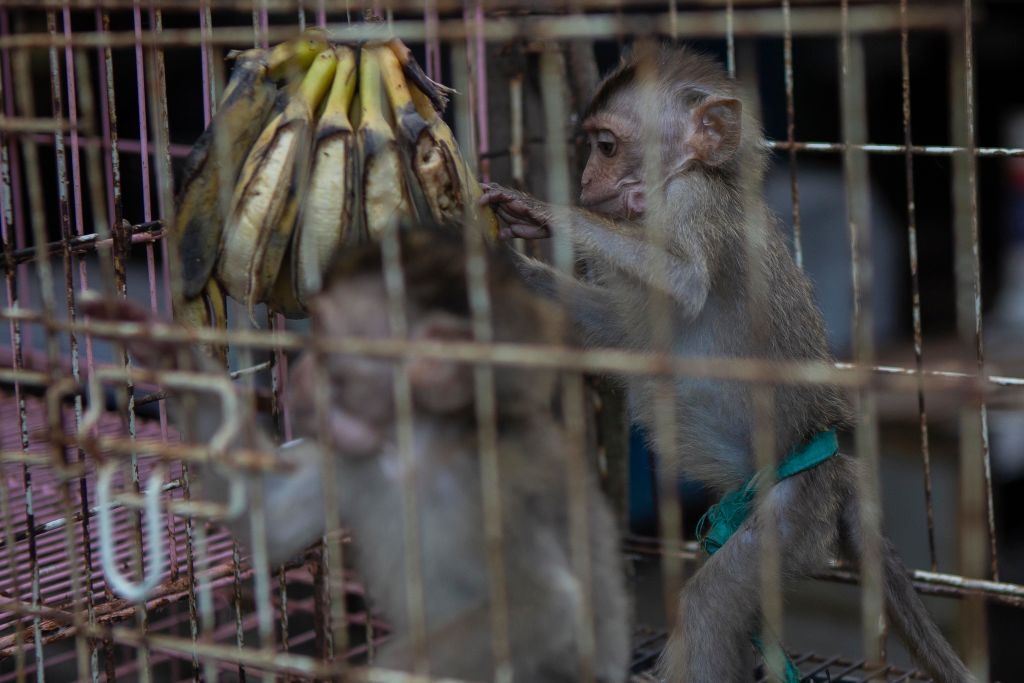
Man has killed off much of the Earth’s existing wildlife, and some scientists argue that human activity has set off the world’s sixth mass extinction event. New research now shows global animal populations are declining more rapidly than earlier believed.
Authors of the study published in the journal Biological Reviews on May 15 analyzed more than 71,000 animal species—spanning mammals, birds, reptiles, amphibians, fish and insects—to assess their population growth over time. They found 49% of these species are stable, but 48% have shrinking populations, and only 3% have populations on the rise.
Assessing the extent of mass extinction has traditionally relied on the conservation status the International Union for Conservation of Nature (IUCN) assigns to a species. The IUCN’s Red List marks down these statuses from time to time to provide a snapshot of the changing composition of wildlife. Of the populations and extinction risks of more than 150,300 species evaluated by the committee, 28% are considered facing the threat of extinction.
Animal populations disappear all the time to make way for new species, but the new study highlights the extent of “real” biodiversity loss as the species with declining populations far outnumber those with increasing numbers, says research co-author Daniel Pincheira-Donoso. “The issue with this mass extinction in particular is that it is happening too quickly,” he tells TIME. “Species do not have enough time to evolve to take [over] those [other] species. So we lose and lose and lose, and we don’t see our turnover.”
The authors also concluded that depending solely on the IUCN’s Red List “runs a risk of downplaying the severity of biodiversity loss” as they found that some 33% of the species classified as “non-threatened” have populations on the decline, too. For instance, some 13% of bird species are considered “threatened,” but the study found that 53% of them have falling populations.
Species of amphibians like frogs and newts appear to be most at risk, with low stable population and high falling population. Geography is a factor, too, as animal population decline is more concentrated in the tropics compared to temperate regions.
“Collectively, our findings reinforce the warning that biodiversity is on the brink of an extinction crisis,” the authors write. This, they say, will have “extensive ecological and ecosystemic consequences, given that ecological functioning is severely impacted by population declines and the resulting changes in community compositions.”
Lim Jun Ying, assistant professor at the Department of Biological Sciences at the National University of Singapore, says the study, while not particularly revelatory, is a more granular assessment of animal population compared to the IUCN threat categories.
But Lim notes a caveat. “How these numbers play out, you would have to really look at the local context,” he says. “It’s not just the overall numbers of how much is being lost. We have to take into account what those species are actually doing in those ecosystems. And whether or not the ecosystems have the ability to compensate for that loss.”
The IUCN categories remain “an excellent resource” for conservation scientists, Pincheira-Donoso explains, and their study should be used alongside it for more preventive approach toward addressing biodiversity loss. “It’s by no means obsolete; it’s just an alternative way of looking at the situation. And in fact, if you put them together, you can get a pretty precise picture about what is going on.”
Pincheira-Donoso adds that their study could help policymakers with more forward-looking conservation efforts instead of just focusing on the current data.
For Lemnuel Aragones, a professor at the Institute of Environmental Science and Meteorology at the University of the Philippines in Diliman, the study is a “great revelation” at a time when biodiversity loss has been relegated to the sidelines, and the extent of the damage humans cause to wildlife. “The common layman doesn’t have that intuition to put things together, that we have had so much impact on our environment, that we have cleared and converted many ecosystems that’s resulted in the demise of a few species,” Aragones said. “We don’t want to say that there’s no problem when there is actually a problem.”
More Must-Reads From TIME
- The 100 Most Influential People of 2024
- The Revolution of Yulia Navalnaya
- 6 Compliments That Land Every Time
- What's the Deal With the Bitcoin Halving?
- If You're Dating Right Now , You're Brave: Column
- The AI That Could Heal a Divided Internet
- Fallout Is a Brilliant Model for the Future of Video Game Adaptations
- Want Weekly Recs on What to Watch, Read, and More? Sign Up for Worth Your Time
Contact us at letters@time.com